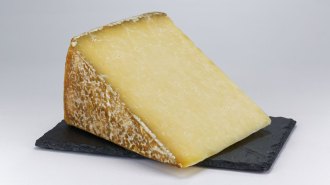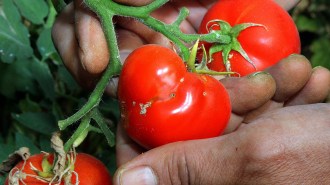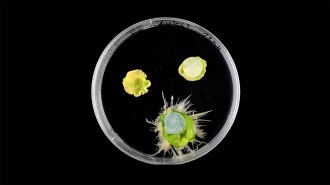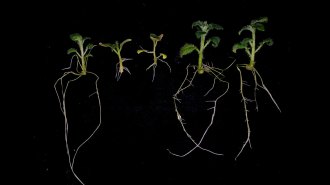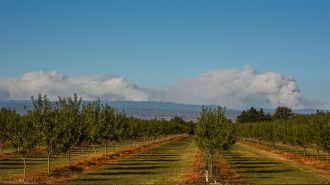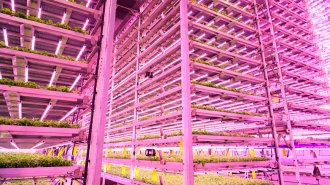A grapevine bacteria may help douse wildfire-tainted wine’s ashy aftertaste
Strains found on grape plant leaves can degrade a smoke compound that can wind up in wine
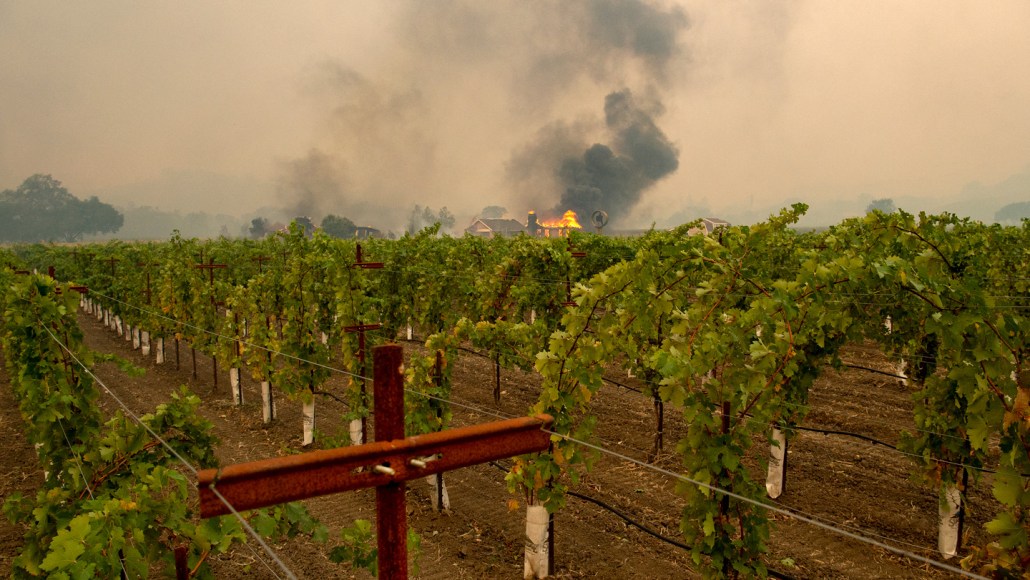
Smoke fills the sky over a vineyard in California during the 2019 Kincade fire.
JOSH EDELSON/Contributor/Getty Images
Natural bacteria from grape plants might help neutralize the notorious ashy aftertaste that develops after wildfire smoke blankets wine grapes.
A gene from the bacteria Gordonia alkanivorans is involved in breaking down one of the main smoky substances responsible for the unpleasant flavor, researchers report October 1 in PLOS One. These microbes live on the surface of grapes’ leaves and the fruit’s porous skin. Winemakers may one day be able to harness the bacteria to degrade the offending chemical compound before it causes a campfire-like taste known as smoke taint.
The finding comes as the wine industry is grappling with prolonged and intensifying wildfire seasons. California and Oregon winemakers lost more than $3 billion from damages and unusable grapes in 2020 alone. “Most years, there are fires that affect vineyards somewhere in the western United States or British Columbia,” says Tom Collins, a grape and wine chemist at Washington State University in Richland. “It’s happening often enough now that we need to have the tools to be able to address it.”
Wildfire smoke contains chemical compounds called volatile phenols that slip through a grape’s waxy membrane. But smoke taint can be tricky to detect. Grapes attach sugars to the foreign molecules, temporarily locking smoky aromas away. The bad taste reemerges after the wine fermentation process, which breaks down the sugary camouflage.
Collins and his colleagues collected leaves from chardonnay and cabernet sauvignon grape plants to sample available bacteria and understand how they interact with smoke taint compounds. Scientists placed the bacteria into petri dishes, feeding each culture a different energy source: glucose, guaiacol (a key volatile phenol associated with smoke taint) or nothing at all. Bright orange blobs bloomed in two of the guaiacol-only conditions — and the researchers genetically identified two G. alkanivorans strains as the guaiacol-degrading bacteria.
The team measured how each strain degraded guaiacol over time. After 96 hours, the guaiacol in both dishes was barely detectable. The researchers also fed both strains smoky compounds similar to guaiacol. But the bacteria did not grow, suggesting that the strains are choosy and different types of bactria will be needed to tackle other compounds that contribute to smoke taint.
The researchers also identified the gene responsible for guaiacol degradation. When they deleted it from one strain, it could no longer consume the chemical compound.
Current mitigation techniques can remove more than what winemakers bargained for, says Cole Cerrato, who studies smoke taint at Oregon State University in Corvallis. Filtering affected wine with activated charcoal, for instance, can not only absorb unwanted smoky chemicals, but also remove other desirable components such as the wine’s color. “This microbial approach has the potential to be a little bit more specific without impacting the overall quality of the wine,” says Cerrato, who was not involved in the study.
Still, guaiacol is just one of many volatile phenols that cause smoke taint. Collins says more work needs to be done to further explore the grape plant microbiome and its potential to consume other ashy offenders.

